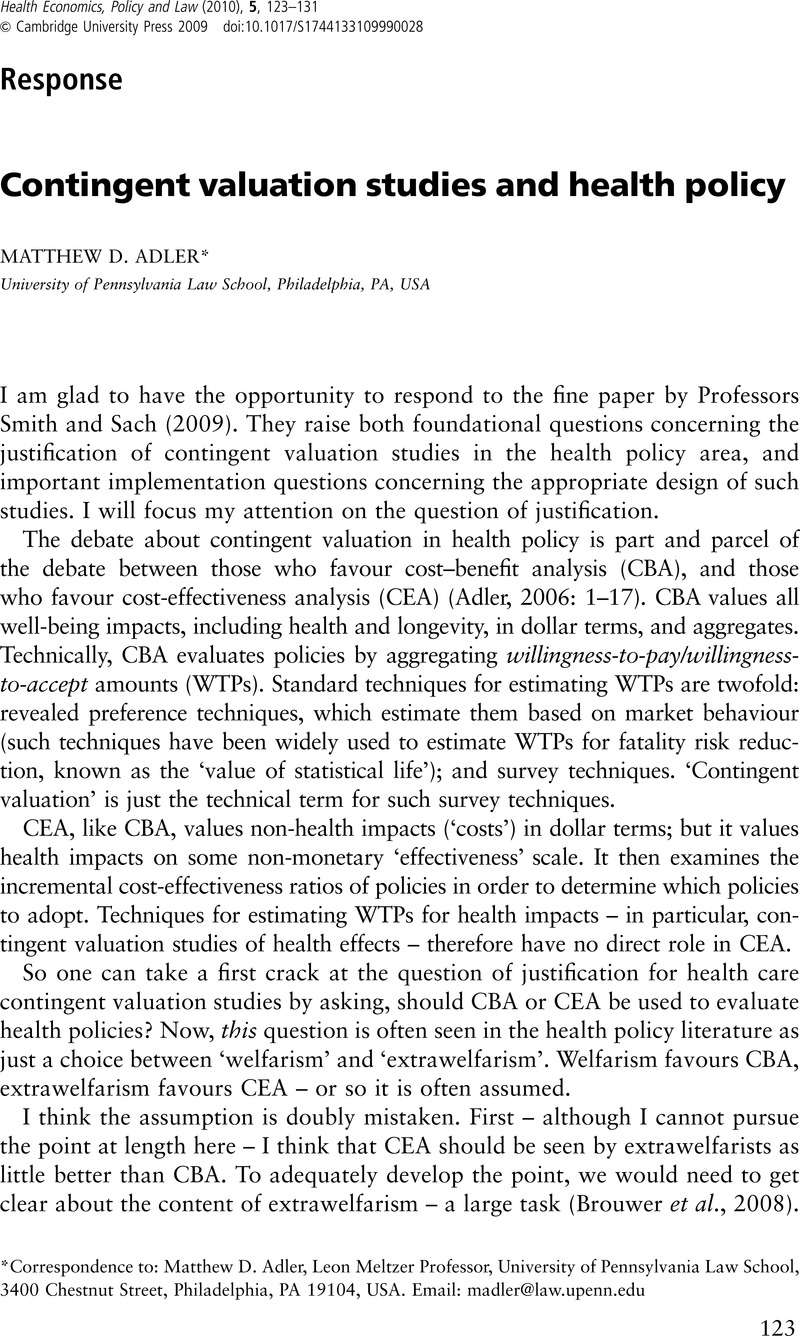Crossref Citations
This article has been cited by the following publications. This list is generated based on data provided by Crossref.
Dodge, Kenneth A.
and
Mandel, Adam D.
2012.
Building Evidence for Evidence‐Based Policy Making.
Criminology & Public Policy,
Vol. 11,
Issue. 3,
p.
525.
Shackley, Phil
and
Dixon, Simon
2014.
THE RANDOM CARD SORT METHOD AND RESPONDENT CERTAINTY IN CONTINGENT VALUATION: AN EXPLORATORY INVESTIGATION OF RANGE BIAS.
Health Economics,
Vol. 23,
Issue. 10,
p.
1213.
Patenaude, Bryan N.
Semali, Innocent
Killewo, Japhet
and
Bärnighausen, Till
2019.
The Value of a Statistical Life-Year in Sub-Saharan Africa: Evidence From a Large Population-Based Survey in Tanzania.
Value in Health Regional Issues,
Vol. 19,
Issue. ,
p.
151.
Patenaude, Bryan N
and
Bärnighausen, Till
2019.
Quality-adjusted life year weights and treatment bias: Theory and evidence from cognitive interviews.
SAGE Open Medicine,
Vol. 7,
Issue. ,



